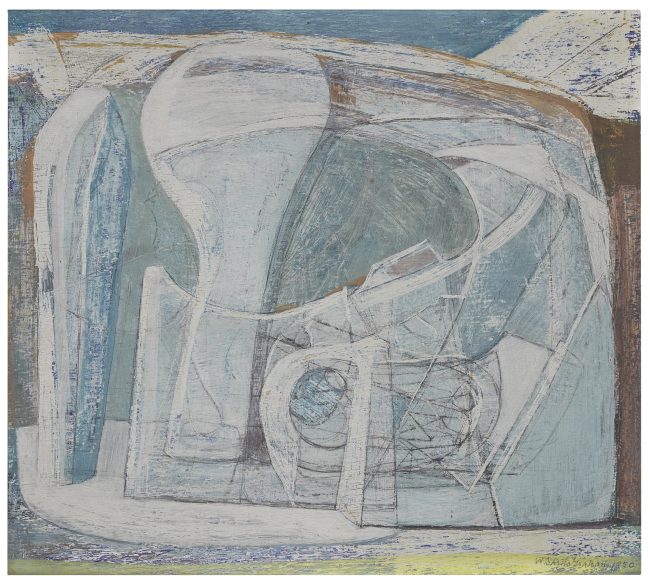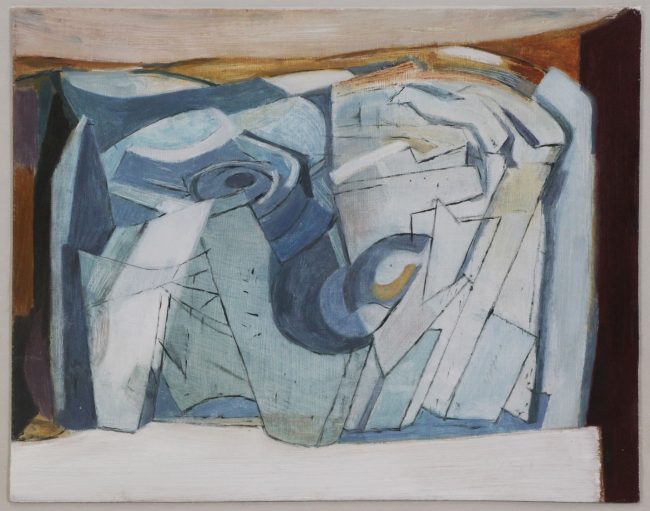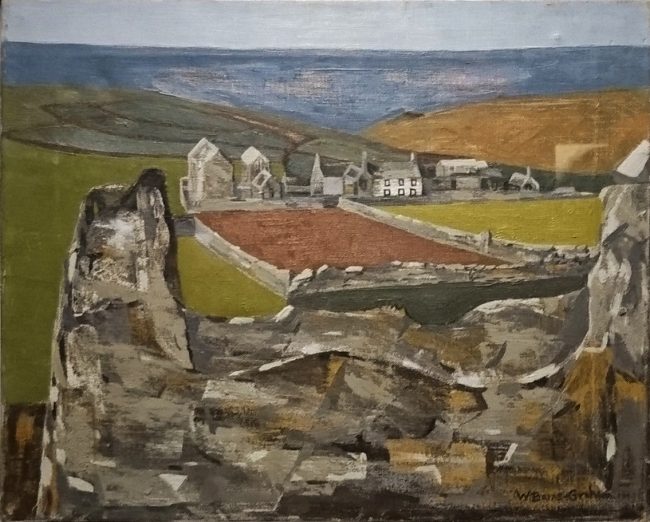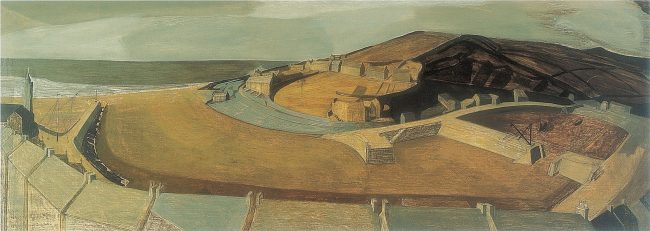WBG’s Ongoing Glacial Success

Glacier (Bone), 1950, Oil on pencil on board, Private Collection Ex Sotheby's
In less than eighteen months significant prices have been achieved for two of Wilhelmina Barns-Graham’s glacier paintings, one being a world record. It confirms that her Grindelwald glacier inspired work is still the must have Barns-Graham picture for the collector of Modern British art.
The two paintings in question are Glacier Bone (1950) and Small Vortex (1951), sold at Sotheby’s, London (November 2016) and Clarke Auction, New York State (February 2018) respectively. It was not surprising that the former achieved the record price of £106,250 (including buyer’s premium; estimate £50-70,000) since it was one of a number of paintings included in a special sale from the disbursement of David Bowie’s art collection. A little Bowie hype perhaps though pro rata the second Barns-Graham painting, sold the following morning – View of the Coast from Zennor, St Ives – exceeded its estimate by a higher margin (estimate £12,-18,000; sold £62,500). Small Vortex meanwhile was estimated at $4-6,000 and reached $68,750 (including premium).
Wilhelmina (Willie) Barns-Graham’s glacier paintings have been popular with collectors of Modern British art right from the outset, and was the first body of work to establish her credentials as a significant modernist artist. Her visit to the Grindelwald Glacier in Switzerland in May 1949 brought her face to face with a living example of the artistic credo of Naum Gabo, whose pre-occupation with negative space she would have been aware of. Barns-Graham first met Gabo shortly after she arrived in St Ives on a wet March evening 1940, introduced by Margaret Mellis (an Edinburgh art college friend) and Adrian Stokes who were hosting both Ben Nicholson’s family and the Gabos. Throughout the 1940s Barns-Graham would have been privy to Gabo’s views, as was Barbara Hepworth, but until the visit to Switzerland there is no evidence of Gabo’s philosophies found in her own painting. The Grindelwald Glacier changed all that at a stroke. Willie became transfixed by the translucent nature of the ever shifting ice and the interior shapes and rubble that it contained. The oft quoted letter in which she describes the “…..contrast of solidity and transparency…..” and that “This likeness to glass and transparency, combined with solid rough ridges made me wish to combine in a work all angles at once, from above, through, and all round, as a bird flies, a total experience” reflects the awe she experienced on the glacier.
The Grindelwald Glacier pictures were a turning point and one in which she discovered a new vocabulary for her own abstract language. The series was first exhibited at the Bookshop of G.R.Downing and a major glacier theme painting Upper Glacier was purchased by the British Council in the following year. The glaciers brought her to the attention of London’s art milieu and brought her considerable critical acclaim. Herbert Read included her in his new book Contemporary British Art illustrating her with the British Council’s painting. She was invited to have her work included in two international exhibitions – Danish, British & American Abstract Artists which took place at the riverside Museum, New York, and as one of only eight artists to represent Britain at the first Biennale de Peinture de France, both in 1951.
The series evolved away from direct glacier references to that of rock forms around 1953. However, it should be recognised that between 1950 and 1953 she did make paintings on more established themes. For example she submitted Cornish Landscape (Evening) Porthleven to 1951’s Festival of Britain art prize, in the painting category from the South West region, which she won, alongside Barbara Hepworth (for sculpture) and Bernard Leach (for craft). This portrayal of Porthleven reveals her ongoing interest in the grandeur of the Cornish landscape rather than the exploration of tensions between interior and exterior forms. It is clear that she had no issues with working in both spheres simultaneously. The ever growing series of paintings that one sees from 1953-54 that focus on rock forms walk a path between these two ‘extremes’.
There is no doubt that the experience on the Grindelwald Glacier was a momentous event for Wilhelmina Barns-Graham, one which altered her artistic path in irreversible ways. Such are life’s accidents.
To see further examples from the glacier series visit the collection pages on the Wilhelmina Barns-Graham Trust web site HERE.

Small Vortex, 1951, Oil on Panel, Private Collection

View of the Coast from Zennor, St Ives, 1949, Private Collection Ex Sotheby's

Cornish Landscape (Evening) Porthleven, 1951, Oil on Canvas, Borough of St Ives
